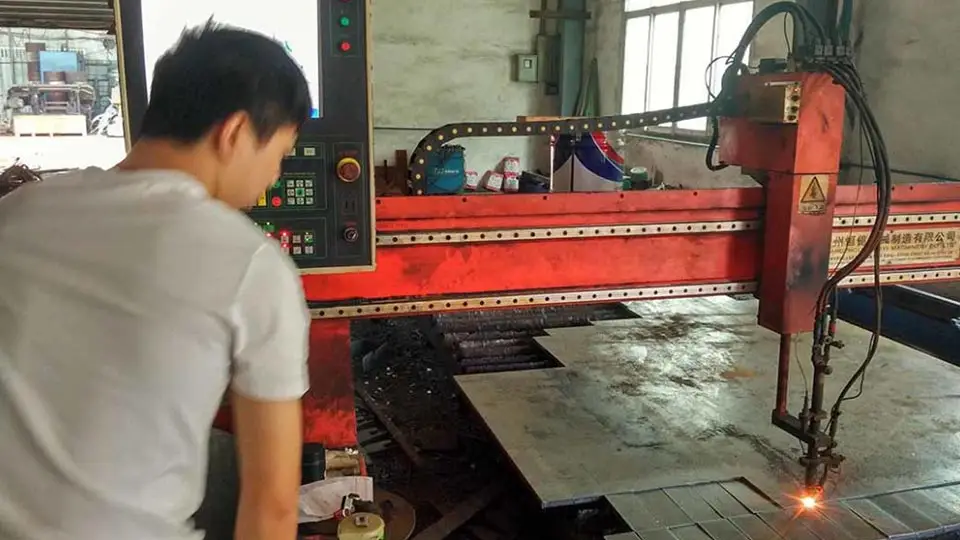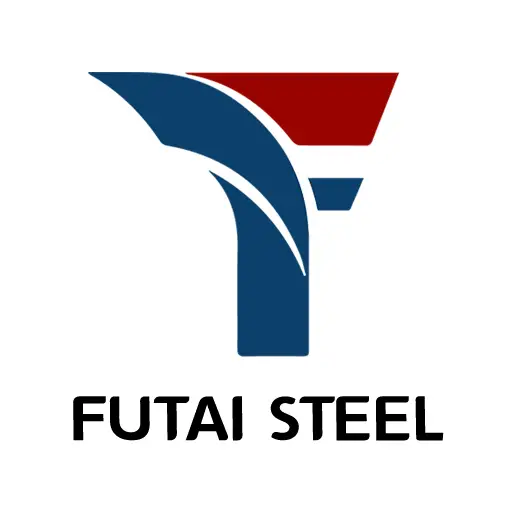5 Carbon Steel Types That Are Perfect for Tough Applications
Table of Contents
Introductio

Carbon steel is one of the most commonly used materials in industries worldwide due to its versatility, strength, and cost-effectiveness. It’s particularly well-suited for tough applications where durability and performance are critical. However, not all carbon steel types are created equal, and the right choice depends largely on the specific requirements of the application, including hardness, wear resistance, and the environment in which the steel will be used.
In this post, we’ll explore five carbon steel types that are ideal for tough applications, helping you make an informed decision when selecting the right steel for your project. Whether you’re manufacturing industrial equipment, automotive parts, or tools, the right carbon steel type will provide long-lasting durability and strength.
NO1. Low Carbon Steel Types: Versatile and Cost-Effective
Low carbon steels, typically containing less than 0.3% carbon, are some of the most widely used carbon steel types due to their affordability and ease of fabrication. These steels are particularly useful in applications where high tensile strength is not required but where flexibility and formability are essential.
Key Features Types:
- Malleability: Low carbon steel can be easily welded, bent, and shaped.
- Corrosion Resistance: While not as resistant to corrosion as other types of steel, low carbon steel performs well in mild environments.
- Applications: It’s commonly used in construction, automotive parts, and household appliances.
Despite their lower strength compared to other carbon steel types, low carbon steels are often the go-to material for products where toughness and formability are more important than sheer strength.
NO2. Medium Carbon Steel Types: The Sweet Spot for Toughness and Strength


Medium carbon steels, containing between 0.3% and 0.6% carbon, strike a balance between strength and ductility. These carbon steel types are used in applications requiring a combination of strength, hardness, and wear resistance, but where the material still needs to be workable.
Key Features of Medium Carbon Steel Types:
- Increased Hardness: Medium carbon steels are highly versatile because they can undergo heat treatment processes, such as quenching and tempering, to significantly increase their hardness. This heat treatment not only improves the material’s ability to resist abrasion but also enhances its capacity to withstand impact, making it suitable for more demanding applications where durability is crucial.
- Improved Strength: One of the key advantages of medium carbon steels is their ability to provide superior strength compared to low carbon steels. The increased carbon content, combined with heat treatment, contributes to a stronger material that can handle greater mechanical stresses without deforming. These steels also exhibit better wear resistance, which is essential for applications that involve frequent friction or heavy usage, like machine components that need to endure constant motion or pressure.
- Applications: Medium carbon steels are often used in the manufacturing of a wide range of industrial components. They are commonly found in machinery parts, automotive components such as gears and shafts, and structural applications where both strength and workability are essential. These steels strike a balance between hardness and ductility, making them ideal for parts that must endure high loads while still being machinable and formable during production.
Medium carbon steel offers versatility for projects that demand both toughness and ease of manufacturing, making it ideal for a wide range of industrial uses.
NO3. High Carbon Steel Types: High Hardness for Extreme Toughness
High carbon steels, which contain more than 0.6% carbon, are known for their exceptional hardness, strength, and wear resistance. These carbon steel types are often used in applications where durability and the ability to withstand high stress and wear are critical.
Key Features of High Carbon Steel Types:
- Exceptional Hardness: High carbon steels are renowned for their ability to achieve remarkable hardness, especially when subjected to heat treatment processes like quenching and tempering. This enhanced hardness makes them ideal for heavy-duty applications that demand durability under extreme conditions. The ability to maintain a sharp edge or resist deformation even under high stress makes high carbon steels the material of choice for tools that require precision and long-lasting performance.
- Wear Resistance: One of the standout features of high carbon steels is their exceptional wear resistance. The high carbon content gives these steels the toughness needed to withstand continuous friction, pressure, and mechanical stress. This makes them particularly suitable for tools and machinery that endure significant wear and tear over time, such as cutting tools, knives, and high-performance equipment used in industries like manufacturing and construction. High carbon steels resist abrasion and maintain their integrity even after prolonged use, reducing the need for frequent replacements.
- Applications: High carbon steels are widely used in the production of various tools and machine components that require superior hardness and wear resistance. These steels are commonly found in cutting blades, drills, chisels, and industrial machinery parts that operate in high-stress environments. The toughness and durability of high carbon steels also make them essential in applications that involve high-impact forces, such as automotive parts, mining tools, and construction equipment. Additionally, they are used in products that must retain sharpness over time, like knives and surgical instruments. With their combination of strength and resilience, high carbon steels are a go-to choice for applications that demand maximum performance and longevity.
While high carbon steels offer excellent performance in harsh environments, they can be less malleable and more prone to cracking, making them less suitable for applications requiring significant forming or welding.
NO4. Alloy Carbon Steel Types: Enhanced Performance in Extreme Conditions
Alloy carbon steels are carbon steel types that are combined with other elements, such as chromium, vanadium, or molybdenum, to improve specific properties like strength, toughness, and resistance to high temperatures. These steels are engineered to perform well in extreme environments, including high-stress and high-temperature conditions.
Key Features of Alloy Carbon Steel Types:
- Improved Strength: Alloying elements provide additional strength and toughness.
- High-Temperature Resistance: Some alloy carbon steels can perform well in environments with elevated temperatures.
- Applications: These steels are used in heavy machinery, aircraft components, and automotive parts where high performance is essential.
Alloy carbon steel types offer enhanced performance, especially in demanding applications, making them an excellent choice for industries like aerospace, automotive, and heavy machinery.
NO5. Ultra-High Carbon Steel Types: Maximum Hardness for Specialized Tools

Ultra-high carbon steels are the highest-carbon carbon steel types, typically containing 1.0% to 2.0% carbon. These steels are designed for specialized applications that require maximum hardness and wear resistance, such as tools that need to maintain a sharp edge for extended periods.
Key Features of Ultra-High Carbon Steel Types:
- Maximum Hardness: Ultra-high carbon steel offers extreme hardness, making it ideal for applications that require long-lasting sharpness.
- Excellent Wear Resistance: These steels are incredibly resistant to abrasion and wear, which is why they’re often used in cutting tools.
- Applications: Ultra-high carbon steel is often used in the production of cutting tools, knives, and wear-resistant components.
While these steels offer unmatched hardness, they can be brittle and require precise handling and heat treatment to achieve the desired results.
Carbon Steel Types Comparison Table
| Carbon Steel Type | Carbon Content | Key Properties | Common Applications |
|---|---|---|---|
| Low Carbon Steel | < 0.3% | Malleable, easy to weld, affordable | Construction, automotive, household products |
| Medium Carbon Steel | 0.3% – 0.6% | Stronger, more wear-resistant, heat treatable | Machinery, automotive parts, structural use |
| High Carbon Steel | > 0.6% | High hardness, excellent wear resistance | Tools, cutting blades, high-stress machinery |
| Alloy Carbon Steel | Variable (depends on alloying elements) | High strength, heat-resistant | Aerospace, automotive, heavy machinery |
| Ultra-High Carbon Steel | 1.0% – 2.0% | Extreme hardness, wear resistance | Cutting tools, knives, wear-resistant parts |
Conclusion
Choosing the right carbon steel type for your project is crucial to ensuring optimal performance, durability, and cost-effectiveness. Whether you need the flexibility and affordability of low carbon steel, the strength and wear resistance of high carbon steel, or the specialized properties of alloy or ultra-high carbon steels, there is a carbon steel type to fit your specific requirements. Always take into account the conditions under which the steel will be used, including factors like stress, temperature, and wear, to make the best selection.
FAQ
Q1. What are the main differences between low, medium, and high carbon steel types?
- Low carbon steel is more malleable and easier to work with, but it has lower strength.
- Medium carbon steel offers a balance of strength and ductility, making it versatile for many applications.
- High carbon steel has higher hardness and wear resistance, but it can be more brittle and less workable.
Q2. What are the best carbon steel types for heavy machinery?
Alloy carbon steels and medium carbon steels are often the best choices for heavy machinery due to their strength, toughness, and resistance to wear.
Q3. Can ultra-high carbon steel be welded?
Welding ultra-high carbon steel can be difficult due to its hardness and brittleness. Proper heat treatment is often required to make it more workable.
